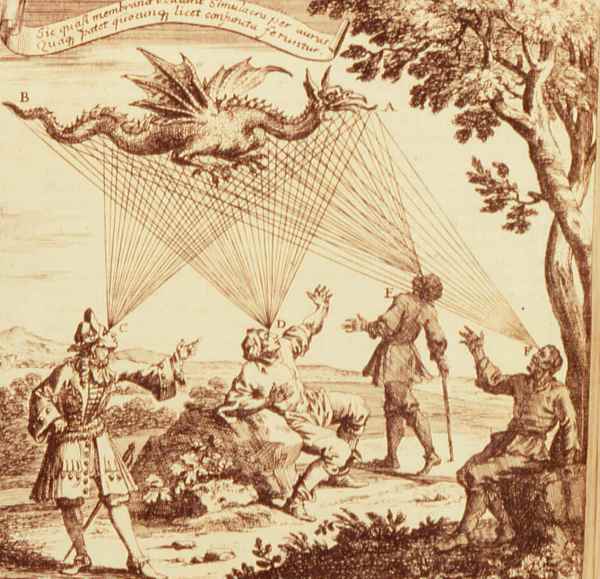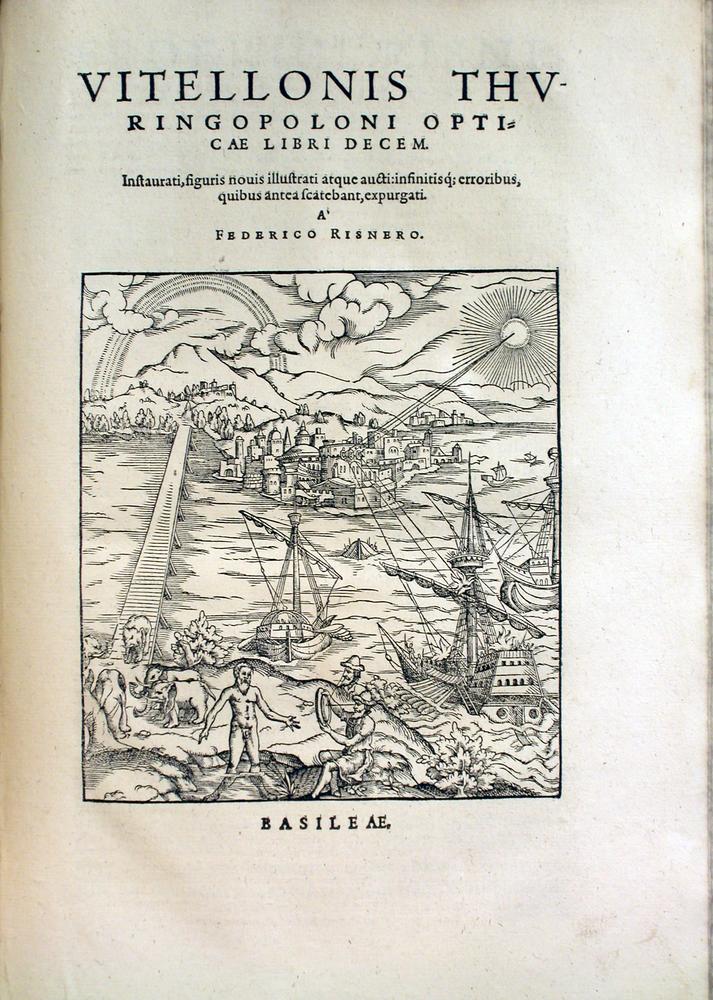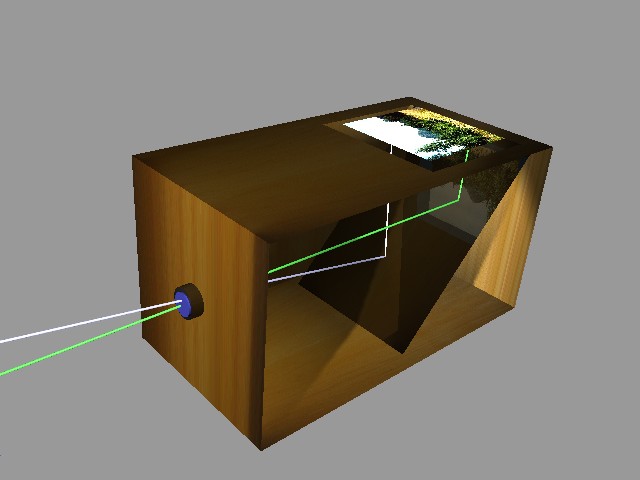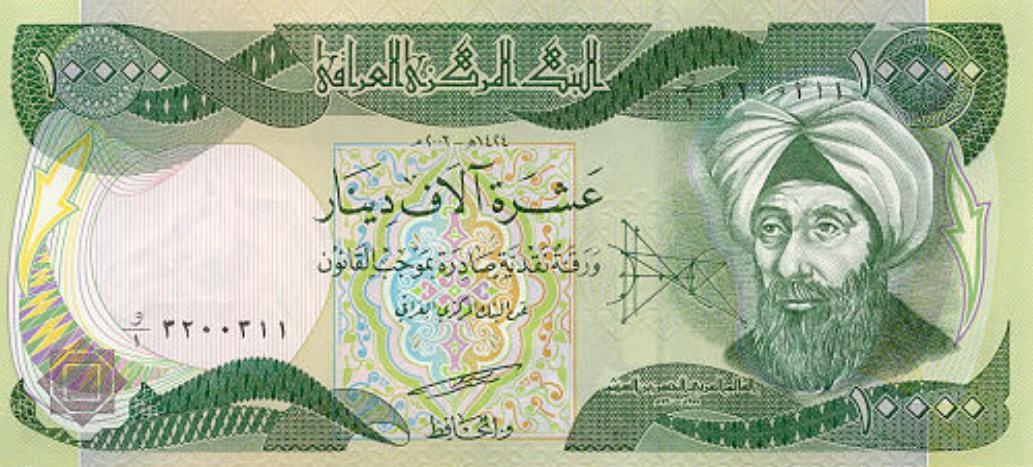Book review: Ibn al-Haytham and the New Optics
Ruveyda Ozturk*
Table of Contents1. Prologue
2. Introducing Ibn al-Haytham and His Work
3. Ibn al-Haytham's Intellectual Legacy
4. Reflexsions on Scientific Methodology
5. The Mathematical Investigation of the World
6. Concluding Remarks
7. Table of Contents of the Book
8. Resources and Further Reading
* * *
Review of Ibn El-Heysem ve Yeni Optik (Ibn al-Haytham and the New Optics) by Huseyin Gazi Topdemir (in Turkish). Ankara: Lotus Publishing, 2008. Soft cover: 155 pages; ISBN- 13: 975-6665503; 16 x 24. 1. PrologueThe full name of our scientist is Abu Ali al-Hasan Ibn al-Hasan Ibn al-Haytham al-Basrî al-Misrî (965-1041). In medieval Europe, he was known as "Alhazen" (Latin form of "al-Hasan"). He was born in Basra, Iraq. He was a great mathematician, astronomer, physicist, and the founder of experimental science. He supported the results of his experiments with strong proofs. He began his scientific career in Iraq, where he envisaged the construction of a high dam on the river Nile near Aswan to regulate its waters. When the Fatimid Caliph al-Hakim (996-1021) heard about this project, he invited Ibn al-Haytham to Egypt, where firsthand observation convinced our scholar that such a construction was impossible. He then simulated madness and was put under house arrest until al-Hakim's death. After 1021, under the following Fatimid caliphs al-Zahir (1021-10367 and al-Mustansir (1036-1049), he recovered liberty and pursued his scientific activies.
 |
Figure 1: Front cover of Ibn El-Heysem ve Yeni Optik by Huseyin Gazi Topdemir (Lotus Publishing, 2008). |
2. Introducing Ibn al-Haytham and his work
The number of written resources available in Turkish on one of the greatest scientists of all times, Ibn al-Haytham (Alhazen), is significantly limited and as such this work fills in a large gap by providing the readers with a wholesome text that sets out his major achievements and everlasting legacy. Ibn al-Haytham is renowned throughout the history of science as the ‘father of optics' for his brilliant contributions way ahead of his time which sometimes overshadow his many other important accomplishments, including the development of valuable experimental methods. The main purpose of this book is to introduce the life, works and scientific successes of "the greatest optician of all times" in eight detailed and comprehensive chapters.
 |
Figure 2: Diagram of the physiology of the eye. Ibn al-Haytham's studies of the eye gave the first modern understanding of lens, retina and optic nerve, as well as the mechanics of vision and perception. (Source). |
 |
Figure 3: The visual system according to Ibn al-Haytham. This diagram of the two eyes seen from above, shows the principal tunics and humours and the optic nerves connecting the eyeballs to the brain. (Source). |
 |
Figure 4: Four stamps on Ibn al-Haytham and his work issued by Qatar in 1971, Pakistan in 1969, by Jordan in 1971 and Malawi in 2008. (Source). |
As a result of his keen focus on this field, he became the most prominent figure in the history of optics until the 17th century and his findings changed the science of optics radically.
 |
Figure 5: The crater Alhazen on the surface of the moon (Lat: 15.9°N, Long: 71.8°E, Diam: 32 km, Depth: 2.17 km) named after Ibn al-Haytham. (Source). See FSTC, http://MuslimHeritage.com/topics/default.cfm?ArticleID=815Illustrious Names in the Heavens: Arabic and Islamic Names of the Moon Craters. |
3. Ibn al-Haytham's intellectual legacy
In the third chapter, Topdemir suggests that studies made on the history of scientific development shows that scientific development was an activity that took place subsequently in between the East and the West throughout world history. He puts forward an interesting argument by suggesting that the high level interaction between different cultures resulting from science show that it is a field on which humanity unites. He asserts that by the 8th century, Muslims had established themselves as the intellectual leader of the world, acquiring the scientific and philosophical legacy of the past. This legacy was embraced by Muslim scholars who utilised the Arabic translations of ancient works to make fresh, original contributions. As such, he argues that it is not surprising for Ibn al-Haytham to have started his studies by an analysis of the knowledge inherited from the Greeks. However he also benefited greatly from the culture of scientific research and development existent in the Islamic world during his times. Topdemir links Ibn al-Haytham's success to two main dimensions, including the application of existent methods to new fields and enhancement of factual knowledge through a process of analysis and secondly on developing new experimental processes.
 |  |
Figure 6a-b: Two medieval illustrations depicting two consecutive theories of vision: (a) the Greek optical theory according to which rays come out of the eye and go to fill the object; and (b) the modern theory expounded by Ibn al-Haytham based on a correct vision theory establishing that vision occurs because the eye can see the object from the light that flows from it. (Source). | |
4. Reflexions on scientific methodology
The in his fourth chapter of the book authored by Topdemir shows that Ibn al-Haytham also developed pioneering concepts on the nature and methods of science and provides a few worthy examples. He states that Ibn al-Haytham was adopted a holistic approach to science and to correctly depict scientific methodology in terms of classical scientific understanding. He was also one of the first scholars of his times to exhibit a modern research approach by focusing on one specific area and to use experimentation as both a tool for discovery and verification. He had a clear understanding of the importance of mathematics, more specifically of geometry, in scientific explanation and demonstration as evident from his quadratic theorem. In his studies, he did not only provide experimental proofs but also made available causal explanations. The author also presents simple details of his fundamental works and the operations of his models giving citations from Ibn al-Haytham's various works to highlight the everlasting effect and relevance of his methods and thoughts. He allows the reader to see that the methodologies and practices Ibn al-Haytham developed were generally at a higher level than those following him like Francis Bacon in the 16th century. It is obvious from his works that he not only valued the observational, experimental and mathematical aspects of science, but at the same time, highly regarded its historical development.
 |  |
Figure 7a-b: Two views of the frontispice of the first edition of the Latin translation of Ibn al-Haytham's Book of Optics, Opticae Thesaurus...Libri Septem, nunc primùm editi. Eiusdem liber De Crepusculis & Nubium ascensionibus. Item Vitellonis...Libri X. Omnes instaurati, figuris illustrati & aucti, adjectis etiam in Alhazenum commentariis, a Federico Risnero. Basel: Episcopius, 1572. (Source) - (Source). | |
 |
Figure 8: The anotomy of the eye by Kamal al-Din al-Farasi based on Ibn al-Haytham's investigations. Kamal al-Din Abu'l-Hasan Muhammad Al-Farisi (1267-ca.1319/1320) was a prominent Persian Muslim physicist, mathematician, and scientist born in Tabriz, Iran. He made a major contribution to the science of optics. (Source). |
 |
Figure 9: Photography is the result of combining several technical discoveries. Long before the first photographs were made, Ibn al-Haytham invented the camera obscura and pinhole camera. According to the Hockney-Falco thesis, some artists used the camera obscura and camera lucida to trace scenes as early as the 16th century. (Source). |
The seventh chapter, titled ‘Ex Oriente Lux' (The Light Comes from the East), suggests that the truthfulness of this statement has been definitively reflected through Ibn al-Haytham's life and works. The author applauds his success in putting forward a wholesome optics theory, overcoming the confusion and lack of clarity associated with this science in those time by utilising fundamental principles and significant techniques. After dismissing the emission theory which suggested that the eye emitted the light rays, Ibn al-Haytham moved from the assumption that light proceeded to the eye from each point on an object to develop his own basic theory. Regardless of a few downfalls, his optics theories were exceptionally successful and were accepted as authority in both the Eastern and Western worlds until the 17th century. Topdemir asserts that the main factor behind this success was his courage in using creative thought and producing independent models, instead of accepting existent theories on their face. He developed many original notions about the nature of light rather than simply refuting previous studies and extensively used experiments to prove his ideas. The author suggests that his book even today is a valid source of clear and comprehensible information on the rules and developments of optics, further signifying the scope and success of his studies.
 |
Figure 10: Harold Anderson, Alhazen Studied the Recreation of Light (1936) (Size: 15"x20"); fine advertising for eyeglasses. (Source). |
 |
Figure 11: Ibn al-Haytham depicted on an Iraqi 10,000-dinar note. |
Overall, the book presents a fair and balanced summary of Ibn al-Haytham's studies, focusing on his major achievements. The basic scientific explanations on relevant issues provided by the author raise the understanding of readers while giving them background information to better comprehend the extent of Ibn al-Haytham's successes. The book is well referenced and contains a large number of explanatory diagrams, images, posters and helpful citations from Ibn al-Haytham's works. However it lacks information on Ibn al-Haytham's life and practices, which might set a better light on his aspirations and determination in scientific research and discovery. It is easy to read and follow and as a whole provides reliable and noteworthy details about a great man who should be taken as an example by any student of science.
7. Table of contents of the book
Abbreviations
Table of Figures
Table of Pictures
Preface
Chapter 1: A Life Devoted to Science
Chapter2: Doctor Mirabilis
Chapter 3: The Intellectual Inheritance that Nurtured Ibn al-Haytham
Chapter 4: Knowledge, Science and Methodology
Chapter 5: Mathematics and Nature
Chapter 6: A New Design of Universe
Chapter 7: Ex Oriente Lux
Chapter 8: Paradigm and Development
Chronology
Index
8. Resources and further reading
- Al-Khalili, Jim, The first true scientist.
- Sabra, A. I., ed., The Optics of Ibn al-Haytham, Books I-II-III: On Direct Vision. The Arabic text, edited with Introduction, Arabic-Latin Glossaries and Concordance Tables. Kuwait: National Council for Culture, Arts and Letters, 1983.
- Sabra, A. I., trans., The Optics of Ibn al-Haytham. Books I-II-III: On Direct Vision. English Translation and Commentary. 2 vols, Studies of the Warburg Institute, vol. 40, London: The Warburg Institute, University of London, 1989.
- Sabra, A. I., ed., The Optics of Ibn al-Haytham. Edition of the Arabic Text of Books IV-V: On Reflection and Images Seen by Reflection. 2 vols, Kuwait: The National Council for Culture, Arts and Letters, 2002.
- Salih, H., Al-Amri, M., and El-Gomati, M., The miracle of light, in A World of Science (UNESCO), A World of science, vol. 3, no. 4, October-December 2005, pp. 2-7.
- Smith, A. Mark, ed. and trans. (2006), written at Philadelphia, "Alhacen on the Principles of Reflection: A Critical Edition, with English Translation and Commentary, of Books 4 and 5 of Alhacen's De Aspectibus, the Medieval Latin version of Ibn-al-Haytham's Kitab al-Manazir, 2 vols", Transactions of the American Philosophical Society (Philadelphia: American Philosophical Soc.) 96 (2–3).
- Sopieva, Natasha, Ibn Al-Haitham the Muslim Physicist.
- Steffens, Bradley, Ibn al Haytham The First Scientist, Morgan Reynolds Publishing, 2007. Visit the website of the book: Ibn al-Haytham.
- [Wikipedia], Alhazen (retrieved 18.10.2009).
- Zahoor, A., Abu Ali Hasan Ibn Al-Haitham (Alhazen) (965 - 1040 C.E.)
by: Ruveyda Ozturk, Thu 29 October, 2009

